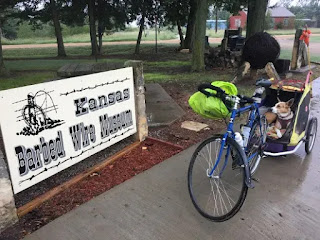In the 1980s, two celebrities--Muhammad Ali and Michael J. Fox--used their own struggles with Parkinson's Disease to raise awareness of the affliction. Moreover, they helped people to realize that Parkinson's wasn't an "old people's disease"--Ali's diagnosis came in his early 40s and Fox's before he turned 30--and that people can live more or less normal lives after a diagnosis and treatment.
Somehow I don't think Brue Closser's life is more or less normal--or less of anything.
The 78-year-old resident of Marquette County, on Michigan's Upper Peninsula, has been cycling since the 1970s. There has been one ride on his "bucket list," he says, and it will commence on 5 May. On that day, he plans to get on his bike in Yorktown, Virginia and pedal to Astoria, Oregon--in other words, across the United States, from the Atlantic to the Pacific Oceans.
I give "props" to anyone who undertakes such a ride. But the journey Closser has planned is especially notable for two other reasons. One is that he is riding from east to west: the opposite direction from that taken by most transcontinental cyclists. The reason for that is that while there are local and daily variations, the prevailing wind is from west to east. (That's why a flight from New York to Paris is about an hour shorter than one in the other direction.) But, perhaps the most noteworthy aspect of his trip will be that when he completes it, he will be, according to the Guinness Book of World Records, the oldest cyclist to complete such a trip.
But the record isn't the reason he's taking the trip, he says. "I learned a long time ago, don't put off your dreams, because I think I can do it this year, but who knows what next year will bring."
Whatever it brings, I doubt Parkinson's Disease will stop him.






